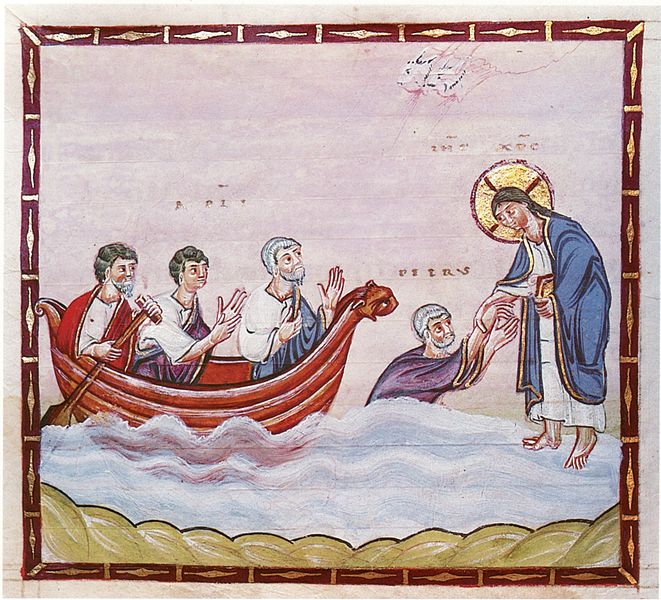- Jeffrey M. Tripp, "A relevation from Gabriel to Nathan? : the Herodian temple and the ideology of the Davidic Covenant in the Hazon Gabriel," 7-27
- Clare K. Rothschild, "'Have I not seen Jesus Our Lord?!' (1 Cor 9:1c) : faithlessness of eyewitnesses in the Gospels of Mark and Paul," 29-51
- Mara Rescio, "Demons and prayer : traces of Jesus' esoteric teaching from Mark to Clement of Alexandria," 53-81
- Carlo Carletti, "Origini cristiane ed epigrafia : note di lettura a proposito di alcune iscrizioni (forse) 'protocristiane'," 83-94
- Tim Denecker / Gert Partoens, "De voce et verbo : Augustine's exegesis of John 1:1-3 and 23 in sermons 288 and 293A auct. (Dolbeau 3)," 95-118
- Guglielmo Forni, "Una crisi della coscienza storica : 1896 - 1904," 119-149
- Mauro Pesce, "La relazione tra il concetto di eresia e la storia del cristianesimo," 151-168
- Elena Mazzini, "L' antisemitismo cattolico e le sue trasformazioni : un tentativo di sintesi a margine di due lavori," 169-189
- Michela Catto, "Confucio in Europa e Gesù in Cina," 191-201
Discussione del libro di Claudio Gianotto (a cura di), Ebrei credenti in Gesù. Le testimonianze degli autori antichi
- Santiago Guijarro, "El Evangelio según Mateo, la Carta de Santiago y la Didajé," 203-206
- Mauro Pesce, "Ebrei credenti in Gesù, un contributo di Claudio Gianotto alla storia della costruzione del cristianesimo dopo il II secolo," 206-214
- Pierluigi Piovanelli, "Un nouveau recueil des témoignages des auteurs anciens au sujet des juifs croyant en Jésus," 215-220
- Claudio Gianotto, "Risposta dell'autore," 221-224
Discussione del libro di Emanuela Prinzivalli, Manlio Simonetti, La teologia degli antichi cristiani (secoli I - V)
- Pierre Maraval, "La teologia degli antichi cristiani de Emanuela Prinzivalli et Manlio Simonetti," 225-229
- Gilles Dorival, "La teologia degli antichi cristiani : l'esprit et la chair," 229-232
- François Vouga, "La teologia degli antichi cristiani (secoli I - V) de Emanuela Prinzivalli et Manlio Simonetti," 233-235
- Emanuela Prinzivalli / Manlio Simonetti, "Risposta a Gilles Dorival, Pierre Maraval e François Vouga," 235-241
Annali di storia dell' esegesi 31:2 (2014)
- Troy W. Martin, "Animals impregnated by the wind and Mary's pregnancy by the Holy Spirit," 11-24
- Simon C. Mimouni, "Les établissements nazoréens, ébionites et elkasaïtes d'après les hérésiologues de la Grande Église," 25-39
- Martin C. Arno, "A critical review of MacDonald's Two shipwrecked Gospels," 41-62
- Franco Motta, "Una figura della tradizione : il Gesù di Baronio (1560 ca. - 1588)," 63-92
- Claudio Ferlan, "L' educazione contesa : una sfida confessionale nella realtà austriaca ; la diocesi di Gurk tra Cinquecento e inizio Seicento," 93-111
- Federico Zuliani, "Sigismondo Arquer tra esegesi biblica e edizioni poliglotte : per lo studio della religiosità di un laico del medio Cinquecento," 113-153
- Gerardo Cunico, "Kant reading the Bible," 155-165
- Alberto Scigliano, "Le istituzioni mosaiche nella repubblica degli ebrei di Joseph Salvador," 167-202
- Liana E. Funaro, "'Cose d'Oriente' : studi ebraici e orientalismo nella Firenze del secondo Ottocento ; inediti da un epistolario," 203-232
- Ottavio A. Ghidini, "Cultura pagana e cultura cristiana, metamorfosi e conversione : a proposito dello studio critico di Monica Bisi Poetica della metamorfosi e poetica della conversione," 233-250
- Antonella Del Prete, "Il tempo del Figlio : i filosofi e il Cristo all'inizio dell'età moderna (25-26 settembre 2013 - Viterbo, Università della Tuscia)," 251-254


